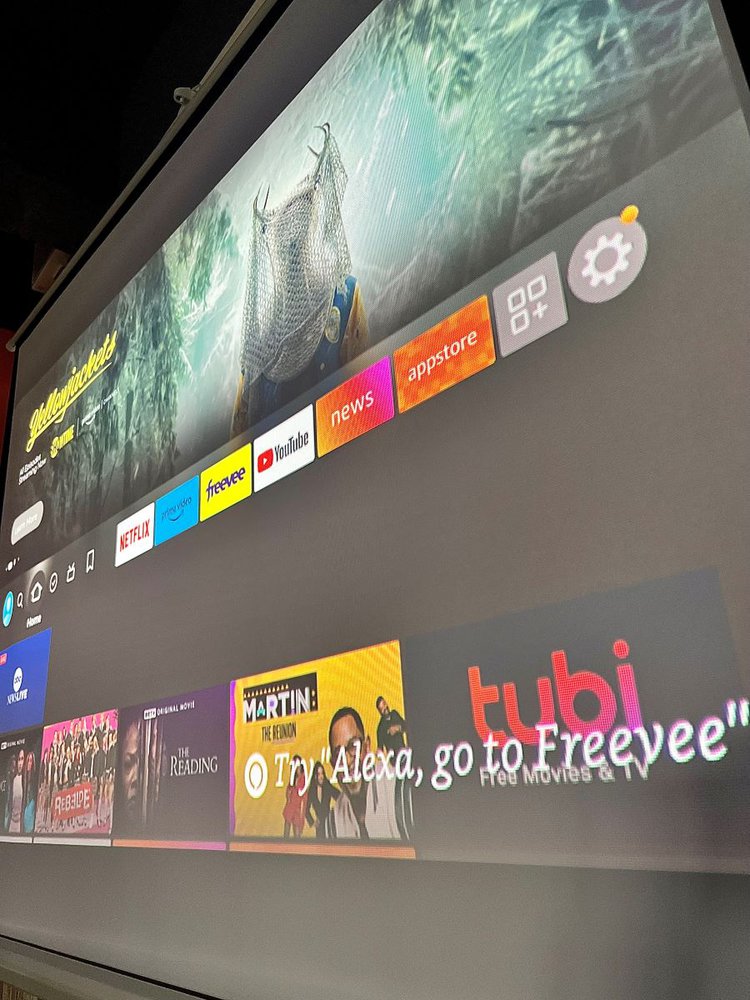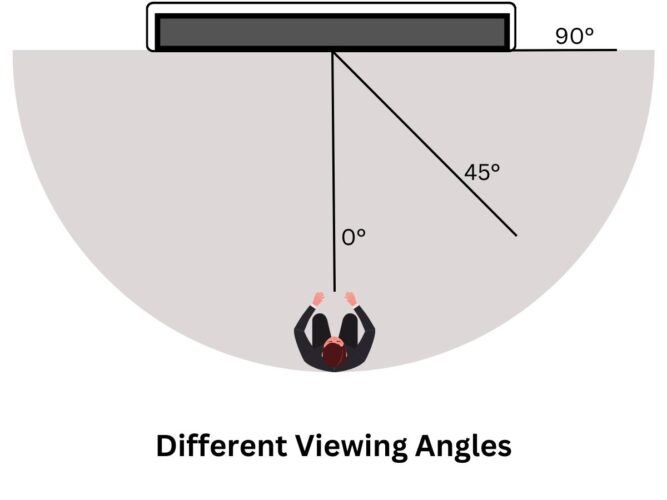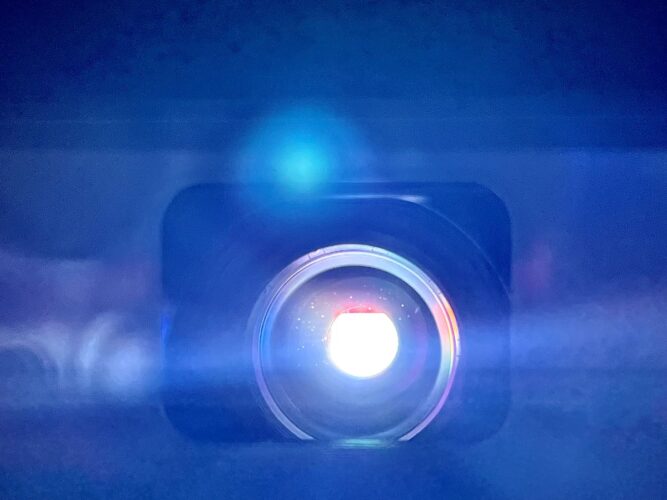Projector Screen Gain Explained: How to Find the Ideal Gain for Your Screen?

What To Know
- Projector screen gain measures reflectivity, affecting brightness; higher gain screens appear brighter and are better for well-lit rooms or outdoor settings.
- Choose a screen with a lower gain for wider viewing angles in dark environments.
- Calculate the best screen gain using this formula: (Desired projection brightness) ÷ (Projector brightness); e.g., for 1500 lumens in a dark room with a 1000-lumen projector, a gain of 1.5 is ideal.
Are you confused about projector screen gain or what gain numbers like 1.1 to 2.0 mean?
This article discovers the ins and outs of screen gain to enhance your viewing experience, whether for dimly lit home theaters or sun-drenched outdoor spaces.
Quick Navigation
What Is Projector Screen Gain? And How to Measure It?
A projector screen serves the purpose of reflecting light from the projector into the audience’s eyes (that’s why you see images projected).
Projector screen gain refers to the measurement of the reflectivity of a screen or a projection surface such as a wall or projector screen paint.
The gain value is determined by measuring the brightest point on the screen when reflecting light, typically at the center known as “Peak Gain” on the “Zero Degrees Viewing Axis.”

A higher gain indicates a greater amount of light reflected off the screen compared to an industry-standard whiteboard. For example, if a screen has a gain of 2.0, it means the projected image appears twice as bright as when projected onto a standard whiteboard.
To illustrate, if a 1,000-lumen projector is aimed at a screen with a gain of 1.5, the perceived brightness will be equivalent to 1,500 lumens. Similarly, a screen with a gain of 0.8 will result in an outcome brightness of 800 lumens.
The variation in screen gain is highly related to the reflective angle. Higher angles reduce gain by scattering light, creating a wider viewing angle. Consequently, lower-gain screens offer good brightness even when viewed at angles greater than 45 degrees.
Furthermore, the reflectivity of RGB (red, green, blue) colors is not uniform. As a result, when viewing the screen from different angles, color changes gradually become noticeable.
Modern screens can have gains as low as 0.6 or as high as 4.0, such as the ALR WhiteBoardScreen. Generally, screens with a gain of 1.6 and above are considered high-gain screens, while those with a gain of 1.6 and below are considered low-gain screens.
5 Factors that Determine Your Projector Screen Gain

1. Purpose
The desired gain for a screen varies depending on the intended viewing purpose.
For example, low-gain screens are ideal for home cinemas without ambient light, while high-gain screens are suitable for meeting halls, outdoor activities, and events.
2. Surrounding Brightness
In environments with ambient light or high brightness, such as classrooms or meeting rooms, a high-gain screen is appropriate.
Its high reflectivity allows for clear image visibility, minimizing the impact of surrounding brightness. A high-gain screen can even be used outdoors during the daytime.
3. Projector Brightness
Higher gain results in greater reflectivity or brightness enhancement.
Therefore, bright projectors with around 3,000 lumens do not necessarily require a high-gain screen to amplify their brightness further.
Conversely, a low-lumen projector of around 500 lumens can benefit from a high-gain screen to enhance the brightness.
4. Audience’s Seating Configuration
As mentioned earlier, lower-gain screens offer wider viewing angles, allowing viewers to watch from almost any direction.
For configurations involving a large number of audiences, a low-gain screen with a wide viewing angle, paired with a powerful projector, is recommended.
But in contrast, for small gatherings or parties, a high-gain screen that focuses on a narrow but well-qualified viewing angle is a good choice.
5. The Surrounding Objects
The presence of surrounding objects also contributes to slight reflections on the screen.
Light-colored objects or walls surrounding the screen can slightly increase the screen’s contrast by reflecting light back onto it.
Higher gain values result in a higher portion of light bouncing from the surroundings.
What Is the Best Screen Gain for Your Projector? What Is the Right Calculation?

The ideal screen gain depends on the purpose of your projection, whether it be for conferences, meetings, or creating a home theater for movie nights with friends and family.
For an average projection screen size of 110 to 120 inches and without ambient light, an ideal projection brightness of 1,500 to 2,000 lumens is recommended.
If there is a light source or ambient light in the room, a projection brightness of over 2,500 lumens would be more suitable.
To calculate the best screen gain, you can use the following formula:
(Screen gain) = (Projection brightness) ÷ (Projector brightness)
Projection brightness refers to the light that is bounced back from the screen and becomes weaker or stronger based on the screen gain.
Projector brightness is the light emitted by the projector itself.
For example, if you want to create a home theater environment for watching movies at night with low or no ambient light, a projection brightness of 1,500 lumens would be sufficient.
And suppose that your projector can emit a maximum of 1,000 lumens, the ideal screen gain would be 1,500 ÷ 1,000 = 1.5 (gain).
Here’s a table providing the recommended projection brightness for different purposes, which can be used as a reference:
| Purpose | Recommended Projection Brightness (ANSI Lumens) |
| Movie Night & Gaming | 1500 or lower (depending on your desired contrast) |
| Meeting & Classroom Activities | 2500 or above (depending on the surrounding brightness) |
Bonuses
What Is the Gain of a Movie Theater Screen?
In movie theaters, all lights are typically turned off to create a dark environment. Therefore, high-gain screens are not necessary. The screen gain for movie theaters usually ranges from 1.0 to 1.5 units.
Is a Low-Gain Screen Bad?
Not at all. The suitability of a low-gain screen depends on your primary purpose for using a projector.
Low-gain screens offer a wider viewing angle and lower the brightness in dark areas, resulting in darker blacks and a higher contrast experience.
Therefore, low-gain screens are a good choice for projecting movies at night or in low-light conditions.
However, it’s important to note that higher-gain screens tend to concentrate light within a narrower angle, which can affect image quality when viewed from wide angles. Viewing distractions becomes significant beyond a gain of 1.3.
To Sum Up
In summary, projector screen gain plays a pivotal role in determining the reflectivity and brightness of your projected images.
By considering factors such as the intended purpose, surrounding brightness, projector brightness, audience seating configuration, and surrounding objects, you can choose the ideal screen gain for your specific requirements.
Remember that low-gain screens offer wider viewing angles and are suitable for dark environments, while high-gain screens excel in well-lit spaces and outdoor settings.
With the provided formula, you can calculate the appropriate gain based on your projector’s brightness and achieve an immersive projection experience tailored to your needs.
Whether you’re setting up a home theater or organizing professional presentations, understanding projector screen gain will guide you toward making the right choices for optimal visual performance.
Duy Anh is a seasoned technical editor specializing in helping readers troubleshoot TV, projector, and Wi-Fi issues. He’s always been drawn to logical problem-solving. His ability to approach matters from various angles with a neutral mindset enhances his technical expertise.

